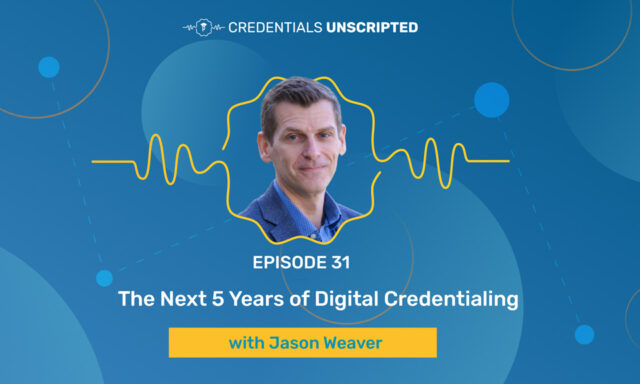Yes, it’s true. Digital diplomas DO make print diplomas easier. In fact, that was the topic of an AACRAO-hosted webinar featuring:
- Sara Cook, Associate Registrar for Academic and Student Services, University of California, Santa Barbara
- Lora Beth Short, Registrar, Southern Regional Technical College
- Amanda Turner, Associate Registrar/Product Management, Williams College
- Moderator Matt Stinson, Director of Higher Ed, Parchment
(View the entire webinar to learn more about digital and print diplomas, how these institutions are handling diplomas this year, and more.)
First, A Little Digital Diploma History
The tradition of awarding graduates with physical diplomas during commencement began in 1813 at Harvard College. Before that, graduates required to prove their Harvard education hired a professional calligrapher to inscribe certification on parchment paper (ahem), then by way of the Harvard President’s signature, the document was attested to.
Over 200 years later, early adopters embraced the digital diploma. Although slow to catch on with mainstream academia in its early years, digital diplomas became necessary when COVID hit in 2020. Caught in a challenging place where administrators couldn’t go into the office and large gatherings were banned, institutions were forced to cancel traditional commencements. And students worried about how they were going to get their diplomas.
Many schools went virtual and wanted to add digital diplomas to complement the online graduation ceremonies. And home-bound administrators also wanted paper diplomas printed and mailed. Today, digital diplomas continue to show value, with social sharing and a credential account, enabling students to articulate their achievements, even during a pandemic.
How Exactly Do Digital Diplomas Make Print Diplomas Easier?
A big reason digital diplomas with Parchment Award make printed diplomas easier – learners are required to verify their mailing address during the digital diploma attainment process. Let’s paint a picture – you and your team spend countless hours verifying and creating diplomas only to have a significant amount returned to you (banged up and battered along the way). We all know why – after graduation, learners move!
Now you can say goodbye to the plethora of returned diplomas and say hello to efficiency. That means your institution can increase learner satisfaction with fewer lost or returned diplomas. And you save time and money with less tracking and resending because of a wrong address.
Reason number two: immediate access to digital diplomas means less pressure on getting print diplomas out of the door. According to Laura Beth Short (Southern Regional Technical College), students really love getting a digital diploma. They receive the online version immediately upon graduation to share with friends and family, post on social media, and include with job and continuing education applications. So, the pressure’s off to get their print diploma. However, grads do know when it’s coming because they can track it.
The third reason is accuracy. Amanda Turner (Williams College) shared an example of her previous diploma processing and workflow. Historically, after the school produced and proofed the diploma data, a small local printer manually recreated all of them. Then, school staff had to quickly proof a second time. With the digital version, Amanda knows that the diploma is going to reflect exactly what’s in SIS. From the Registrar’s Office perspective, going digital not only saves time, but it’s also more accurate.
University of California, Santa Barbara had a really good rollout, says Sara Cook. The best part was the different services Parchment is able to provide, along with system interfaces. While improving things on the staff side (which in turn benefits students), it also opened doors for the Registrar’s Office to improve internal processing for producing diplomas. According to Sara, she wouldn’t change anything about the implementation. Except maybe deciding to do it sooner!
Are Digital Diplomas Here to Stay?
In short, yes! Based on early indications, we expect digital diplomas to grow in adoption over the next few years. That’s because our partners who started digital diplomas during the pandemic for one very specific reason are seeing benefits in other parts of their business for learners and staff. Aside from making print diplomas easier, they are also a springboard for more innovation as institutions are contemplating creating a CLR or other data-rich alternatives to traditional degrees.
What’s more, research shows that students not only want them, they expect them. Today, they demand fast service, like they get with Amazon Prime and Uber. Parchment surveyed students last April, with 82.4% saying they would be interested in their institution sending them a digital diploma in addition to the printed version. Aspects most useful include instant access, the ability to store digitally, security and verification, and social sharing.
How is Parchment supporting institutions?
With Parchment Award, digital and print diplomas are managed all in one place. Digital diplomas are issued in real-time and layer in a greater depth of information – like competencies. Administrators can see what learners are doing with their diplomas – like where they are sharing. And institutions are beginning to experiment with sharing additional information as well.
Digital diplomas can go beyond what a print diploma can do, enabling learners to make more informed education decisions, employers to make better hiring decisions, and credential bodies to make better strategic decisions about the future of their programs. And those digital diplomas make print diplomas easier, too.
With an 80% claim rate – the highest in the industry – you’ll be working smarter, not harder, in no time. Start the conversation today.



